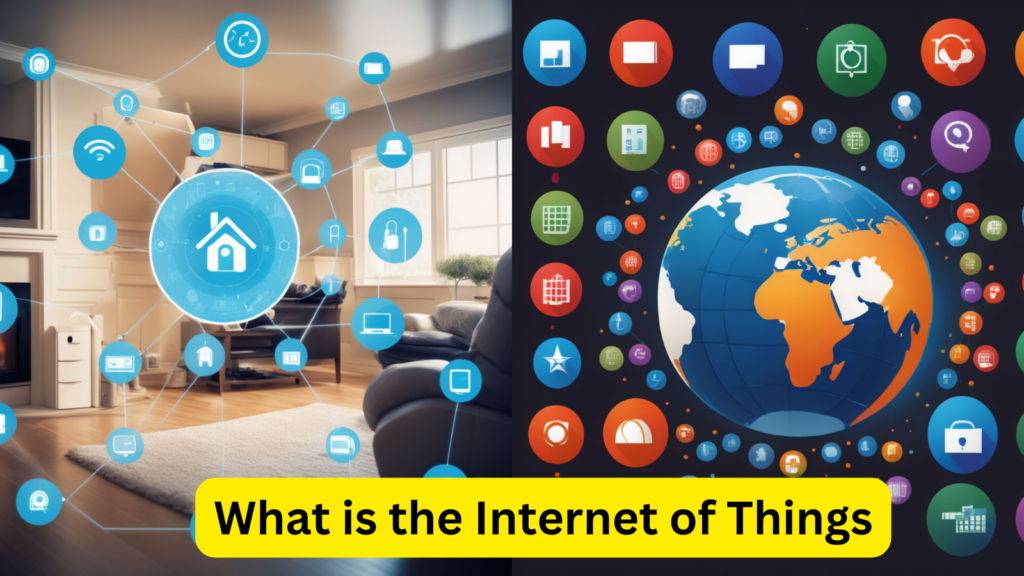What is the Internet of Things: The “Internet of Things” (IoT) has become a ubiquitous term, often thrown around without a clear understanding of what it actually means. Fear not, curious reader! In this blog post, we’ll shed light on the mystery, exploring what the IoT truly is, its potential impact, and how it might shape our future.
From Connected Coffee Makers to Smart Cities (What is the Internet of Things)
Imagine your coffee maker turning on automatically as you wake up, or your lights adjusting to the perfect reading hue at dusk. These are just a glimpse into the world of the IoT – a network of physical devices embedded with sensors, software, and internet connectivity. These “smart” devices collect and exchange data, enabling them to interact with each other and with the environment, automating tasks and creating an interconnected ecosystem.
Beyond Home Automation: The Broader Scope of IoT
While smart homes often grab the spotlight, the IoT’s reach extends far beyond our living rooms. In industries like agriculture, sensors monitor soil moisture and optimize irrigation. In healthcare, wearables track vital signs and send alerts to doctors. Cities are utilizing IoT for smarter traffic management and waste collection. The possibilities seem endless!

Benefits and Challenges: A Balanced Perspective
The IoT promises convenience, efficiency, and personalized experiences. However, challenges like data privacy, security vulnerabilities, and potential job displacement require careful consideration. It’s crucial to navigate this technological landscape with a critical eye, ensuring responsible development and ethical implementation.
The Future of the IoT: A Collaborative Journey
As the IoT evolves, its impact on our lives will continue to unfold. It’s crucial that individuals, businesses, and governments work together to ensure ethical development, address potential risks, and harness the power of the IoT for good.
What is IoT?
At its core, the Internet of Things refers to the network of interconnected devices embedded with sensors, software, and other technologies, enabling them to collect and exchange data over the internet. These devices can range from everyday objects like household appliances, wearable devices, and vehicles to industrial machinery and infrastructure components.

How Does IoT Work?
The functionality of IoT devices relies on sensors that gather data from their surroundings. This data is then processed and transmitted over the internet to be analyzed or utilized in various ways. IoT systems often incorporate cloud computing and artificial intelligence to handle vast amounts of data and make real-time decisions.
Applications of IoT
IoT has permeated nearly every aspect of our lives, revolutionizing industries and enhancing efficiency, convenience, and safety. Here are some notable applications:

- Smart Homes: IoT enables homeowners to automate tasks such as controlling lights, thermostats, security cameras, and even watering plants remotely through smartphone apps or voice commands.
- Healthcare: In the healthcare sector, IoT devices monitor patients’ vital signs, track medication adherence, and even assist in remote surgeries through robotic systems, improving patient care and outcomes.
- Transportation: IoT facilitates smarter transportation systems by enabling real-time monitoring of traffic conditions, optimizing routes for vehicles, and enhancing safety features in cars through features like collision avoidance systems.
- Agriculture: IoT sensors help farmers monitor soil moisture levels, crop health, and weather conditions, allowing for more efficient irrigation, pest control, and crop management strategies.
- Industrial IoT (IIoT): In manufacturing and industrial settings, IoT devices enhance automation, predictive maintenance, and overall operational efficiency by providing real-time insights into equipment performance and production processes.
Challenges and Future Outlook
While IoT presents numerous benefits, it also comes with challenges such as data privacy and security concerns, interoperability issues among devices from different manufacturers, and the potential for job displacement due to increased automation. However, as technology advances and standards evolve, these challenges can be addressed.

Looking ahead, the future of IoT holds immense promise. With the continued development of 5G networks, edge computing, and advancements in AI and machine learning, we can expect even greater integration of IoT into our daily lives and further transformation across industries.
Conclusion
In conclusion, the Internet of Things represents a paradigm shift in how we interact with the world around us. By connecting devices and leveraging data in unprecedented ways, IoT has the potential to enhance efficiency, improve quality of life, and drive innovation across various sectors. As we continue to embrace this transformative technology, it’s essential to address challenges and ensure responsible deployment to maximize its benefits for society as a whole.
